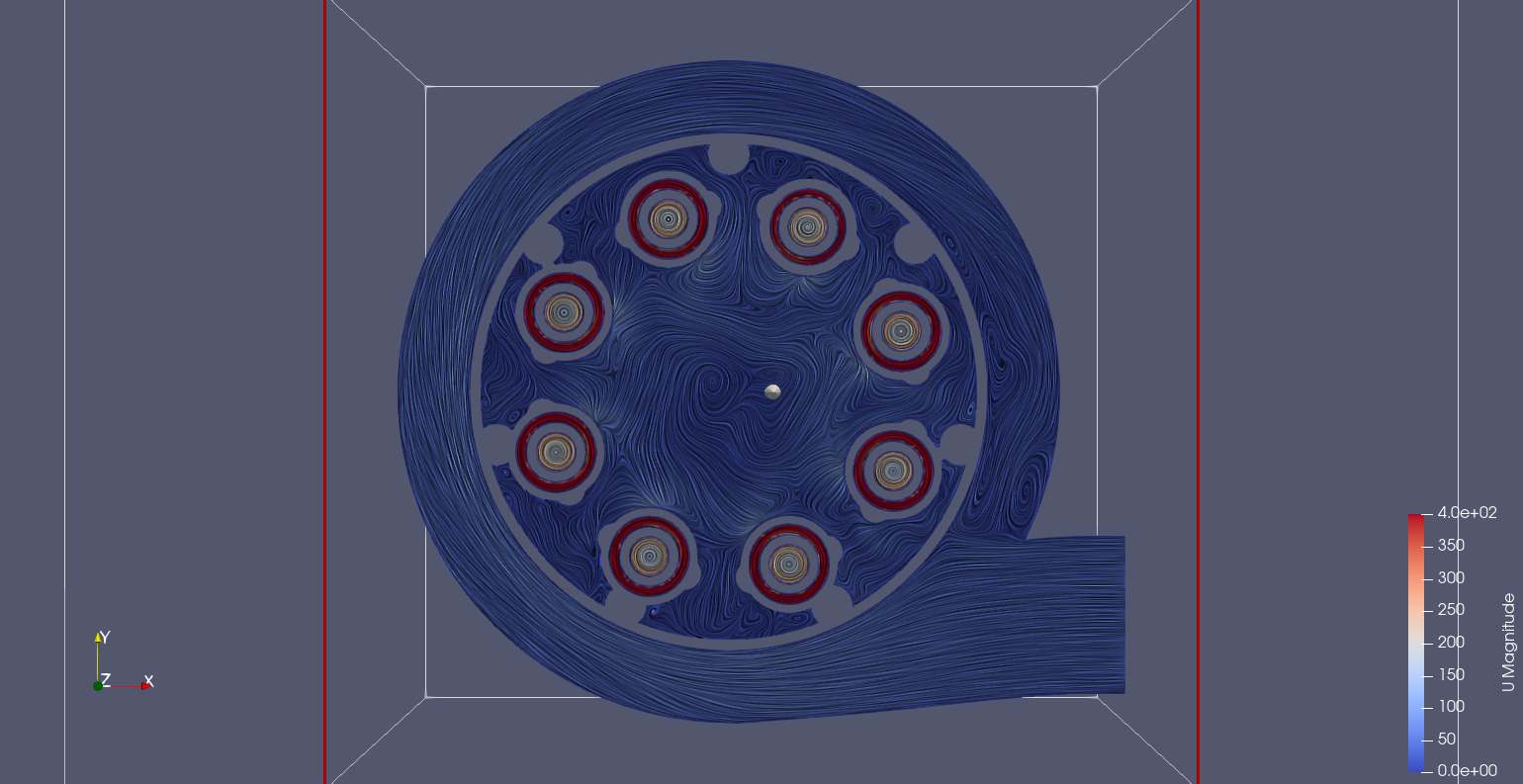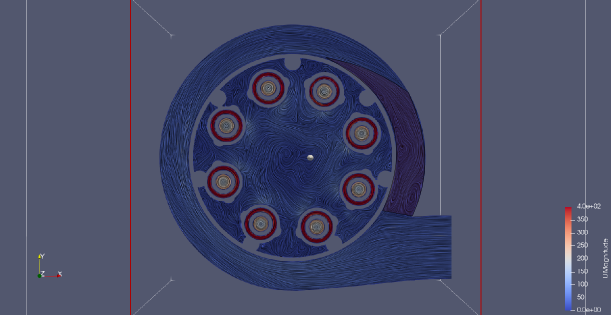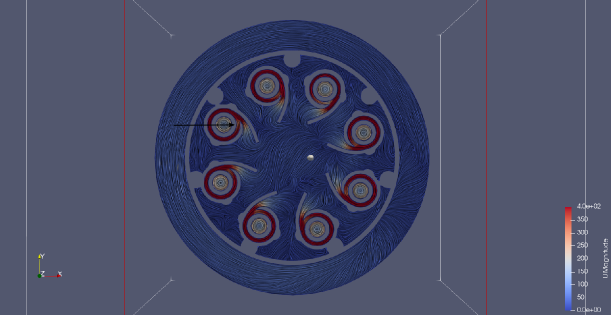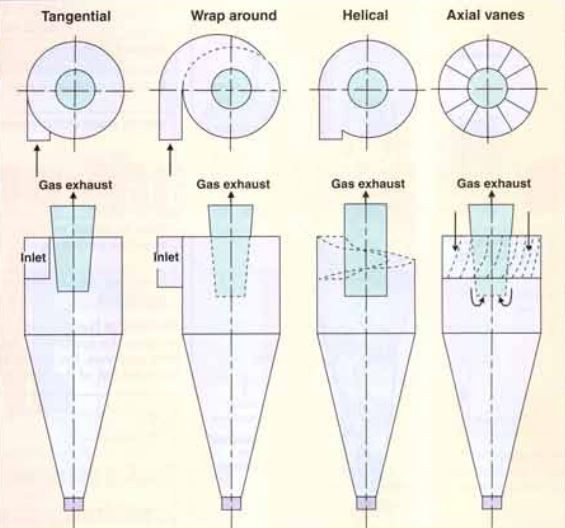Running simulations on the vacuum module was helpful in an indirect way. The simulations in itself aren't able to predict how well the extractor was able to remove particles from the air stream. It isn't using the correct numerical model currently implementing the correct one is a little far at the moment. Any understanding I was able to get was mostly about the shape of the air. It is kind of like having an idea in your head but drawing that idea makes it easier to develop that idea. In this case the it makes it easier to see where air isn't either providing a function or at least illustrating inefficiency.
The following series of images picks out pockets of air that aren't coherent with the surrounding air movement and could be areas of improvement.


When the air ducked in from outside it will rotate around the outer chamber. Th e problem is that when the air wraps around the chamber it collides with the air entering the chamber. Though the air is just pushed down it is done b a pocket of turbulent air. This may be just inefficient but because the velocity is used to separate the dust it is likely also ineffective for its removal.
Similarly with the inner cyclones there is a section where the air slows according to the velocity colour map and the arrow.

Preventing this would mean the air enters the cyclone chambers either directed downwards or by a longer entrance, eg wrap around or helical.

The helical approach looks appealing, especially considering dimensional constraints.
 Nelson Phillips
Nelson Phillips
Discussions
Become a Hackaday.io Member
Create an account to leave a comment. Already have an account? Log In.